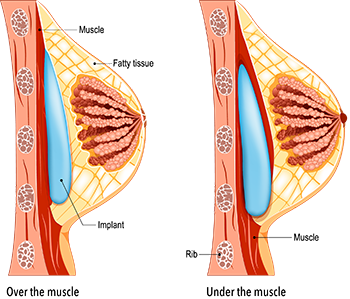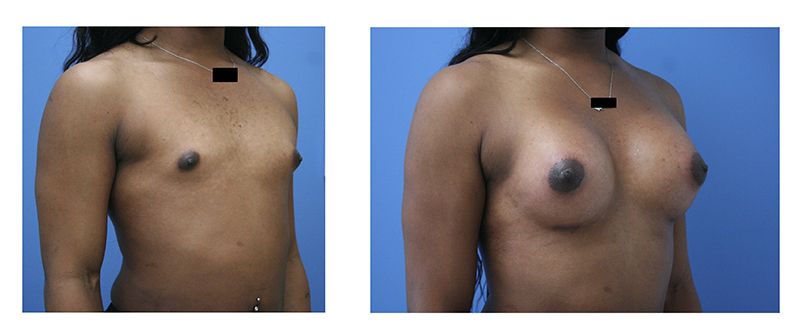
While hormone therapy allows for some degree of breast development, that often ends up simply not being enough. Those patients are often excellent candidates for breast augmentation surgery. This is done as an outpatient surgery with breast implants, which are filled with either saline or silicone gel. During your consultation, Dr. Jerry Chao will review in depth with you your choices, goals, expectations, and recovery in helping you achieve the look you want.

What is Breast Augmentation?
Breast augmentation is performed to increase the size and fullness of the breasts, and is most commonly performed with implants, which are filled with either saline or silicone gel. Breast augmentation is also colloquially referred to as a “boob job”. This procedure can achieve a fuller breast shape, restore volume lost after pregnancy or weight loss, and correct congenital asymmetries. You will see immediate results after your surgery.
Sometimes breast augmentation is performed in concert or staged with breast lift for severely sagging breasts. The surgery takes approximately 1-2 hours and is performed under general anesthesia.
Am I A Good Candidate For A Breast Augmentation?
You may be a candidate for a breast augmentation if you are unhappy with your breast size, fullness, or shape. Breast augmentation can also correct minor amounts of breast sagging while also increasing breast volume.
- At your visit, your doctor will assess:
- Your overall physical health and medical history
- Discuss whether you are a good candidate for surgery and expected outcome
- Take photographs for your medical record
- Perform a detailed physical exam of the breasts
- Your expectations and motivations for surgery
At your consultation, you will discuss with your surgeon the pros and cons of decisions such as breast implant type (silicone versus saline), implant position (above or below the pectoralis muscle), and incision location.
What Are The Risks Of Breast Augmentation?
Some possible risks include bleeding, infection, asymmetry, poor scarring, wound separation, changes in nipple sensation, blood clots, contour irregularities, seroma (fluid accumulation), implant visibility, implant malposition, pain, capsular contracture (formation of tight scar tissue around the breast implant), skin laxity after breast implant removal, and need for revision surgery. Breast implants are man-made devices and have a limited life-span – there is a possibility that you will need surgery to remove or replace the implants if they develop a rupture.
Breast implants have been extensively studied and no definitive link between silicone breast implants and systemic diseases has been identified. There has been a link between textured breast implants and BIA-ALCL (breast implant associated anaplastic large cell lymphoma), a rare type of lymphoma that can develop around breast implants. You will be asked to sign a consent form to express understanding of potential outcomes.
How Is A Breast Augmentation Done?
Breast augmentation is performed as an outpatient surgery. The length of the incision will depend on the size and type of implant that is being placed. Your surgeon will create a space either above or below the pectoralis major muscle and insert the breast implant. After appropriate symmetry is confirmed and adjusted, the incisions will be repaired using absorbable sutures. You typically will not need a drain after breast augmentation.
What Will My Recovery Be Like After Breast Augmentation?
You will see the increased breast fullness immediately after surgery. If you had an incision under the breast, you will be instructed on avoiding bras with underwires (a surgical bra will be placed immediately after surgery) for a period of time. Many women return to work after 1 week, and most fully recover by 4 weeks. It will take several months for your implants to “settle” into their natural position and in the meantime your surgeon may instruct you on massaging the implant. Your surgeon will instruct you further on taking care of the scars after surgery, and these will typically fade and improve over time. It is important to have regular follow up with your surgeon even after the initial healing period to make sure there are no long-term problems related to the implant.
Before & After
- Expand and View Before & After Image
-

